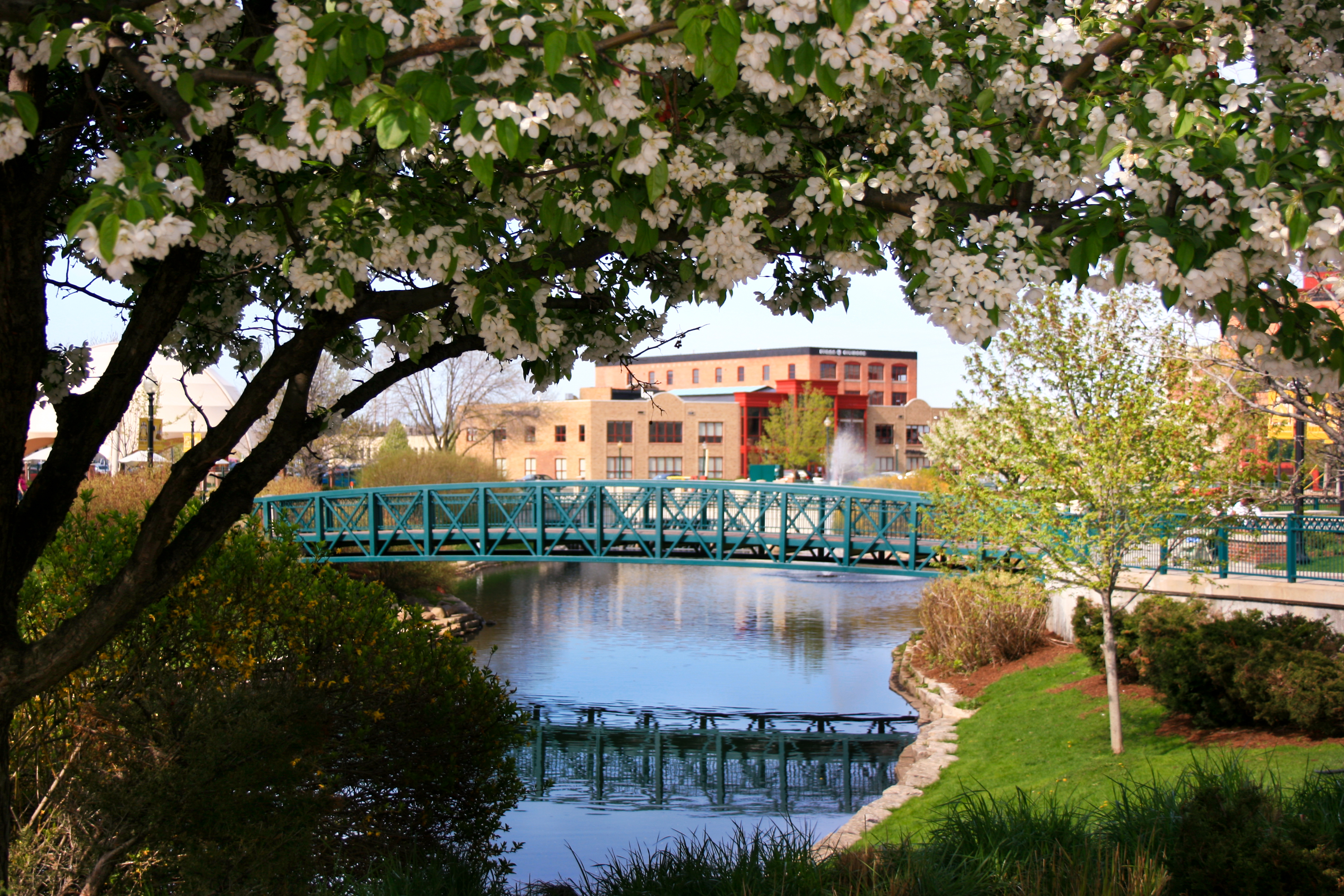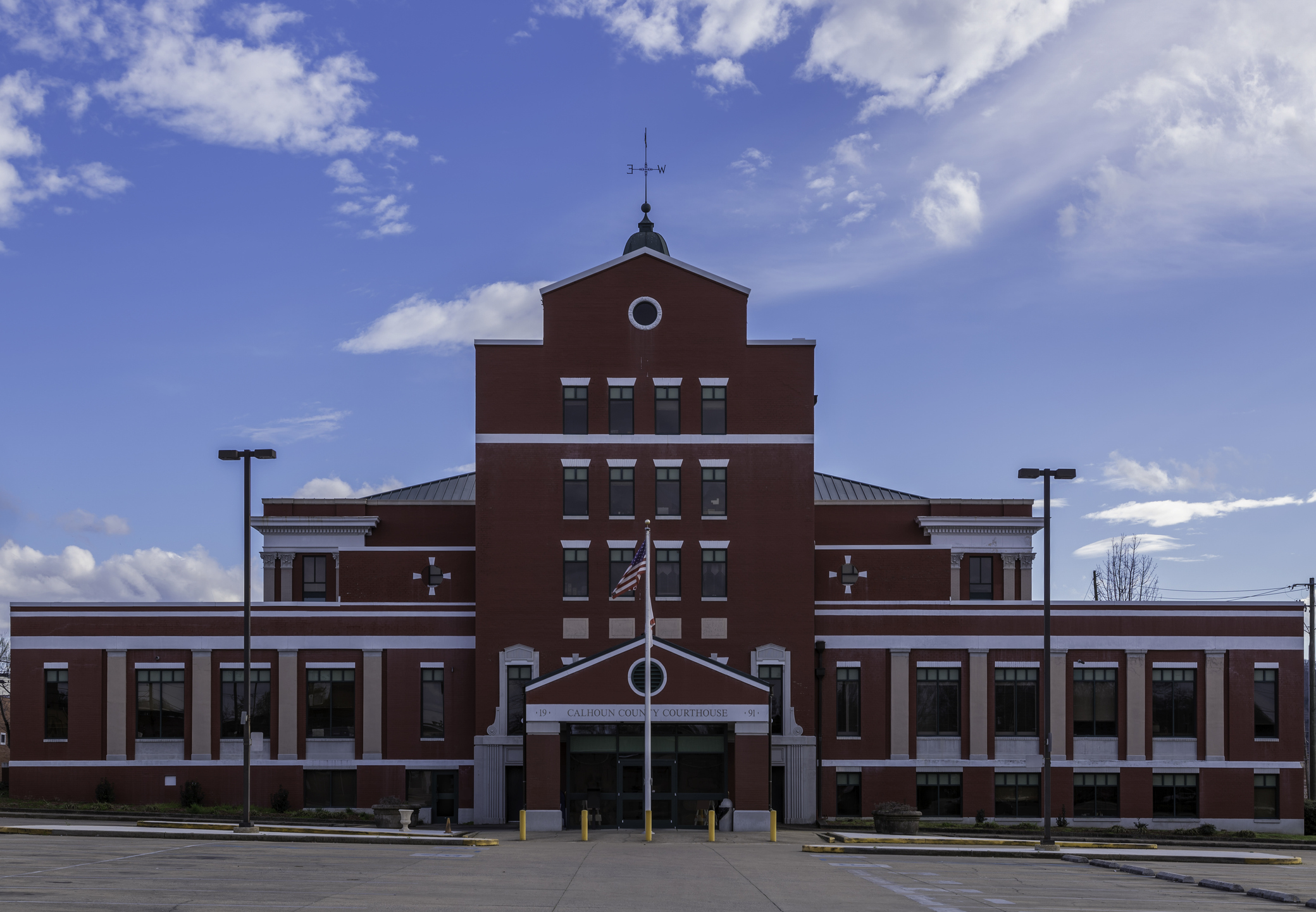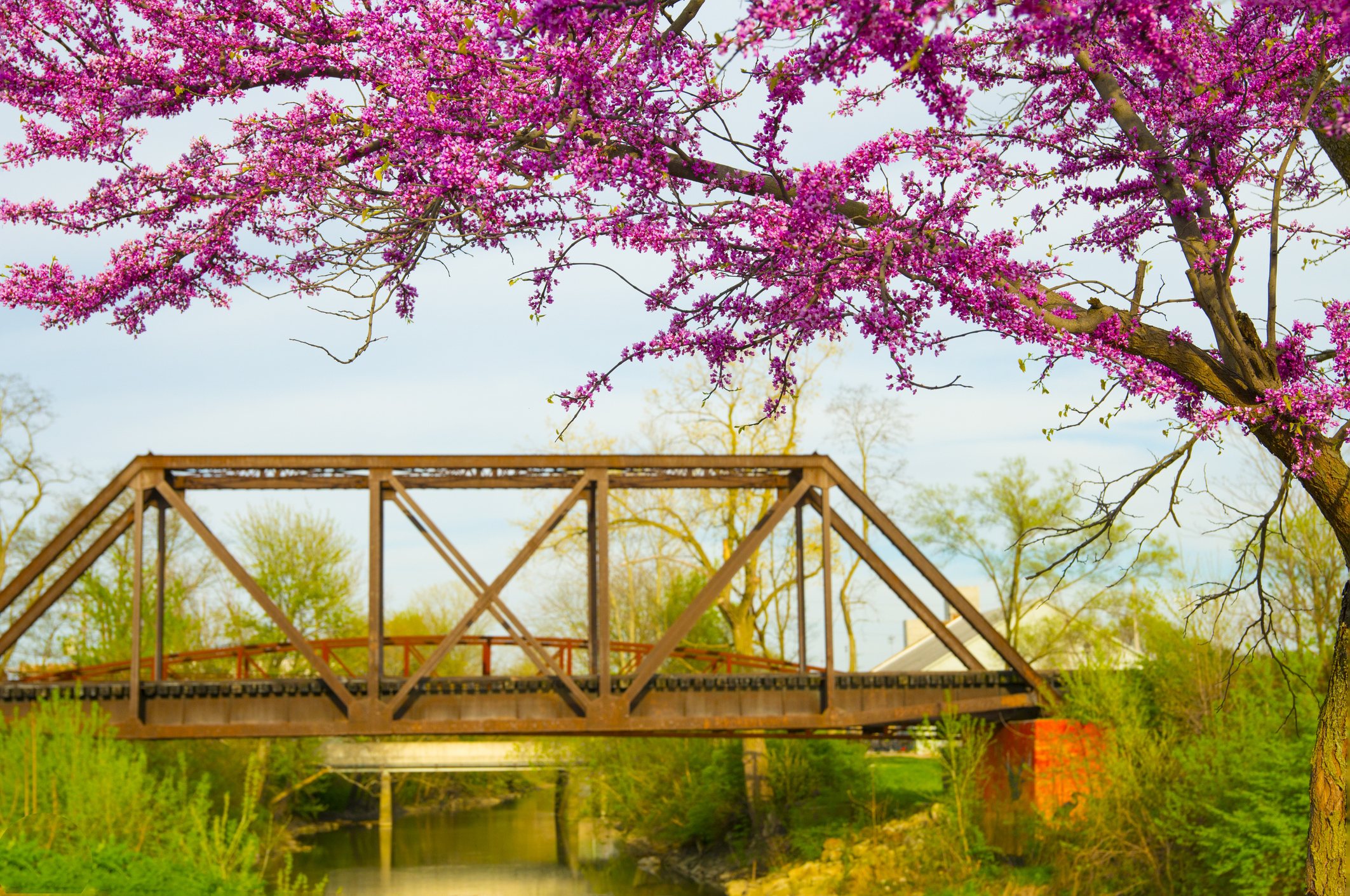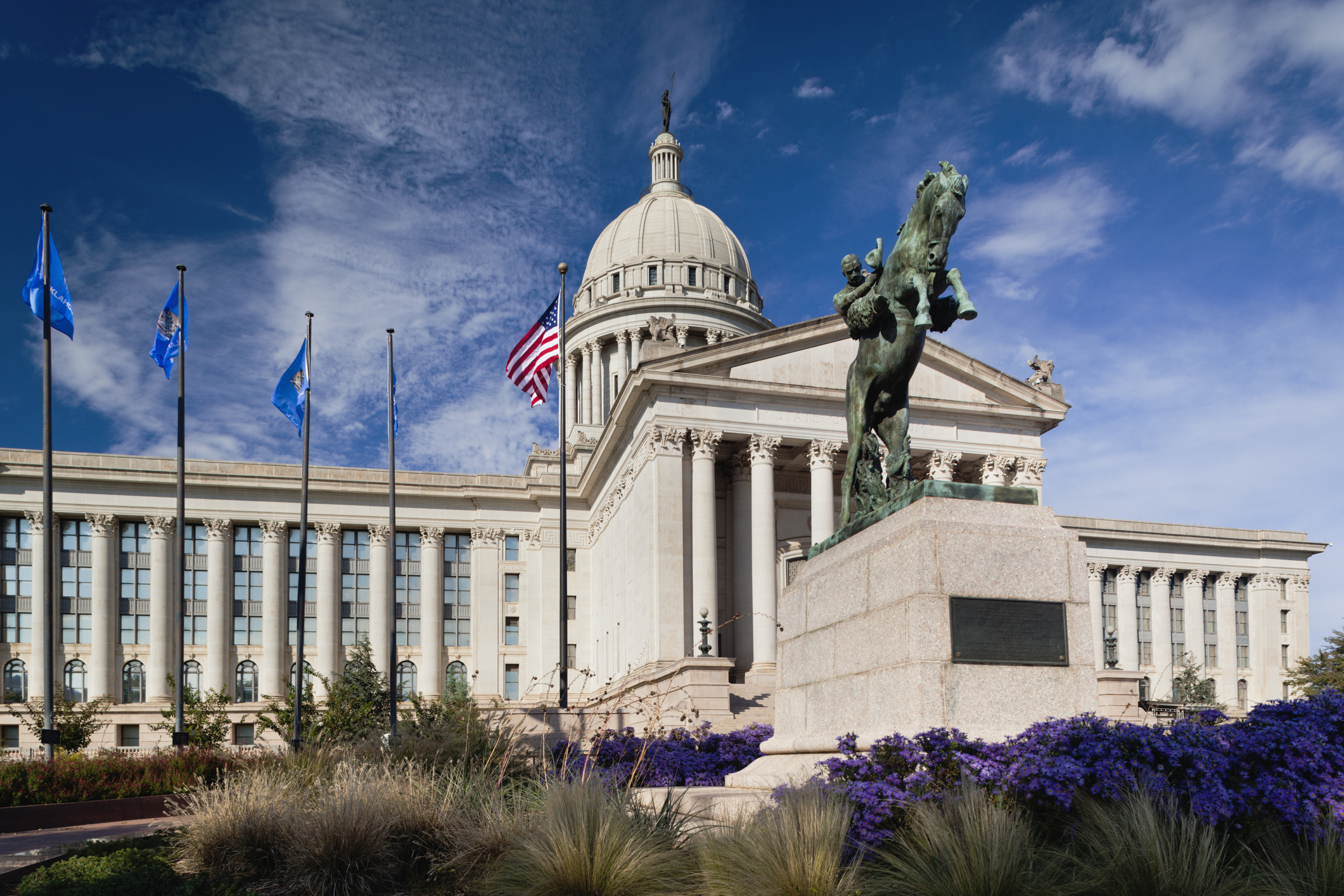The 15 Cheapest Places to Live: U.S. Cities Edition
Have a look at the cheapest places to live in America for city dwellers. Is one of the cheapest places to live in the U.S. right for you?


When it comes to finding the cheapest places to live in the U.S. for city dwellers, the best locations to settle down are mostly south of the Mason-Dixon line. Texas and Alabama are just a couple of the Southern states making multiple appearances on our list of the cheapest places to live among U.S. cities.
But if you're thinking about relocating to one of these places with the lowest costs of living, just remember to weigh the pros and cons. Cheap prices are attractive, but the allure can fade if jobs are hard to come by, paychecks are small or the area offers little to do. Plan an extended visit to ensure that one of these cheapest places to live fits your needs.
"It is undeniable that larger metro areas like New York and Los Angeles offer better opportunities for higher paying jobs," notes Tyler Baines, cost of living project manager and research analyst at the Center for Regional Economic Competitiveness. "But jobseekers should not only consider the size of their paycheck when figuring out where they should call home."
To that last point, Kiplinger has extensive experience in covering real estate, demographics and cost of living data for jobseekers, would-be homeowners, remote workers and retirees.
How we found the cheapest places to live
Our analysis of the cheapest places to live in the U.S. is based upon the Council for Community and Economic Research's (C2ER) calculations of living expenses in 265 urban areas. We then limited ourselves to metro areas with at least 50,000 inhabitants. We further supplemented C2ER's research with data from the U.S. Census Bureau and the U.S. Bureau of Labor Statistics.
(For smaller urban areas, be sure to read our list of the 10 Cheapest Small Towns in America.)
C2ER's Cost of Living Index measures prices for housing, groceries, utilities, transportation, healthcare, and miscellaneous goods and services, such as going to a movie or getting your hair done at a salon.
Thanks to that data — which sorts through 90,000 prices covering 60 different items in hundreds of cities — we were able to pinpoint the places with the absolute lowest costs of living.
And make no mistake, the difference between the priciest place to live and cheapest places to live in the U.S. is striking.
"The after-tax cost for a professional/managerial standard of living ranges from more than twice the national average in Manhattan, New York, to more than 20% below the national average in Decatur, Illinois," notes C2ER.
Read on for our latest list of the 15 cheapest places to live, in the U.S., for city dwellers.
Source: C2ER's Cost of Living Index, 2025 Annual Average Data, published May 2025. Index data is based on average prices of goods and services collected during the first quarter of 2025, with index values based on the new weights for 2025. Metro-level data on populations, household incomes, home values, poverty rates and other demographic information are from the U.S. Census Bureau. Metropolitan area unemployment rates, courtesy of the U.S. Bureau of Labor Statistics, are not seasonally adjusted, and are as of July 15, 2025 for the month of May 2025, which is the latest available data.

15. Kalamazoo, Michigan
- Cost of living: 14.9% below U.S. average
- Metro population: 73,122
- Median household income: $50,044 (U.S. average: $80.610)
- Median home value: $172,400 ($532,390 U.S. average)
- Unemployment rate: 5.3% (4.1% U.S. average)
Kalamazoo annually ranks among the cheapest places to live in the U.S. Sadly, low costs are very much a necessity for too many of its residents.
In the city of Kalamazoo proper (pop. 73,122), nearly 23.6% of residents live below the poverty line. At the metro level, which includes Portage, Michigan, the figure comes to 7.5%. The U.S. and Michigan state poverty rates are 11.1% and 13.1%, respectively.
Another downside? Michigan is among the least tax-friendly states for middle-class families. The median property tax rate is relatively high, and fuel taxes are high compared to other states.
On the brighter side, Western Michigan University, with its multiple campuses and research facilities, is a major driver of the local economy. Medical equipment maker Stryker (SYK) is headquartered in the city, and Pfizer (PFE), the drug company, maintains its largest manufacturing site in Kalamazoo.
As for recreational activities, the Kalamazoo Nature Center hosts free daily activities. Nearby parks offer a combined 140 miles of trails and three swimming beaches. If you want to get away to the big city, Chicago is less than three hours by car if traffic is merciful.

14. Jonesboro, Arkansas
- Cost of living: 15.3% below U.S. average
- Metro population: 80,655
- Median household income: $57,264
- Median home value: $201,000
- Unemployment rate: 3.3%
The Jonesboro Metro area consists of two counties, Craighead and Poinsett, and is anchored by the city of Jonesboro. It’s located in northeast Arkansas and a short 50 mile drive to Memphis, Tennessee. Jonesboro has a small town vibe with facets of a college town as it is home to Arkansas State University.
Arkansas State University is host to the ASU museum that strives to serve the community at large. On Saturdays, the museum’s Tinkering Studio teaches children how circuits work, how to use math to create art and how to create their own animations.
Birding is a popular pastime in Arkansas. Inside the 692 acre Craighead Forest Park is the Craighead Forest Trails Loop. This trail is about 7.4 miles long and is a popular destination for ornithologists and twitchers. Or enjoy year-round fishing for bream, catfish, crappie and bass at Lake Frierson State Park, a short 10 miles north of downtown Jonesboro.
There are plenty of local corporate employers in Jonesboro including Frito-Lay, Unilever, and General Mills — so you can get a good job and enjoy an affordable lifestyle all in one place.
Owning a home is more attainable here than in most places. Arkansas's property taxes are among the lowest in the nation. Housing costs are 35% cheaper than the national average and utilities are 3% less. The average commute is 18 minutes and transportation costs only 9.1% of the national average.

13. Charleston, West Virginia
- Cost of living: 15.7% below U.S. average
- Metro population: 47,918
- Median household income: $64,512
- Median home value: $187,300
- Unemployment rate: 3.5%
Charleston is located at the junction of the Elk and Kanawha rivers and is West Virginia’s capital city. The West Virginia Capitol Complex is a trip back in time. Clustered here are several landmarks to be toured, including the Capitol building, whose gold-leaf dome is taller than that of the U.S. Capitol. This city’s small scale and well-defined districts and neighborhoods make it easy to walk or bike around.
Charleston may start seeing an influx of new college grads. It ranks 12th overall on WalletHub's Best & Worst Places to Start a Career and comes in 5th for Professional Opportunities. Even better, housing prices are over 38% less than the national average; homes sell at at average price of $293,993. That's over $150,000 less then what the majority ($532,390) has to plunk down.
Charleston makes it easy to get out into nature. Head to Kanawha State Forest or Coonskin Park for hiking and biking (the forest even has a pool). In the middle of the river and connected to land, you’ll find Magic Island, a park that offers beach volleyball and other fun. And within an hour’s drive, you have access to mountain biking, skiing and canoeing.
There is no shortage of fine arts in Charleston. You can be a culture vulture at a discount. This city is home to the West Virginia Symphony Orchestra, Charleston Light Opera Guild and the The Charleston Ballet, which offers classes in addition to performances.
Getting ready for a night out in Charleston is also cheaper than most places. A trip to the beauty salon will typically cost you $45 and that is 11% less than the national average.
West Virginia took second place on Kiplinger’s 13 States With the Lowest Property Taxes. Median real estate taxes paid were just over $989 and homeowners age 65 and older may qualify for a homestead exemption of up to $20,000.

12. Florence, Alabama
- Cost of living: 15.9% below U.S. average
- Metro population:41,231
- Median household income: $50,396
- Median home value: $ 74,100
- Unemployment rate: 3.0%
Florence and the Florence-Muscle Shoals metro area, which encompasses the birthplace of Helen Keller, sits in the northwest corner of Alabama on the Tennessee River. It's about a two-hour drive from Birmingham.
In addition to a low cost of living, Florence — and the surrounding area known by locals as The Shoals — boasts a number of attractions and a rich history of music. Florence native W.C. Handy's legacy as the "Father of the Blues" is celebrated with an annual summer festival. And it's no coincidence The Rolling Stones recorded the hit songs "Wild Horses" and "Brown Sugar" at the nearby Muscle Shoals Sound Studio.
Florence claims Alabama's only house designed by legendary architect Frank Lloyd Wright. The city also hosts the University of North Alabama.
Best of all, the city's distinctive sites and southern charm come at a reasonable price. Housing-related expenses are 34.6% lower than what the average American pays. Health care, meanwhile, costs about 22% less. While the state has one of the lowest property tax rates in the nation, it also has one of the highest sales tax rates in the U.S.
All other major expenses tracked by the Cost of Living Index likewise take a smaller bite of folks' paychecks, securing Florence's place among the 25 cheapest places to live for U.S. city dwellers.

11. Joplin, Missouri
- Cost of living: 16.1% below U.S. average
- Metro population: 52,218
- Median household income: $51,154
- Median home value: $159,700
- Unemployment rate: 3.8%
It used to be that Joplin, at least to outsiders, was probably best known as a place where Depression-era bank robbers Bonnie and Clyde hid out for a time. Today, sadly, Joplin is perhaps better known for tornadoes, such as the deadly storm that destroyed about 30% of the city in 2011.
The city (and greater metro area) has since recovered from the costliest single tornado in modern U.S. history, helped by its status as a regional medical center. Its two major hospitals serve a four-state area that includes Kansas, Oklahoma and Arkansas.
Meanwhile, other key employers include General Mills (GIS), Schaeffler Group (SFFLY) and Leggett & Platt (LEG).
Housing-related costs, which run about 38.7% below the national average, help secure Joplin's place on the cheapest places to live for U.S. city dwellers. Expenses for groceries and healthcare are only 5.5% below average. Utilities are an outlier and run slightly over 2.7% above the national average.
From a tax perspective, Missouri is pretty average, it has graduated state individual income tax rates ranging from 2% to 4.8%. The state repealed its income tax on Social Security retirement benefits, starting with the 2024 tax year.

10. Anniston, Alabama
- Cost of living: 16.3% below U.S. average
- Metro population: 65,744
- Median household income: $53,872
- Median home value: $136,900
- Unemployment rate: 3.0%
About an hour's drive east from Birmingham sits the Anniston metro area. The city's proximity to the Mountain Longleaf National Wildlife Refuge makes it a good jumping-off point for hikers, mountain bikers and other outdoorsy types. The city also has its quirks. It's home to the world's largest office chair — a 33-foot-tall seat that was once recognized by Guinness World Records.
Major employers include the Anniston Army Depot and Alabama Regional Medical Center.
Anniston's low cost of living puts it among the 25 cheapest places to live, but it comes alongside a median income that's almost one-third lower than the national median. That said, household incomes and home values are higher in other parts of Calhoun County, of which Anniston is the county seat.
Either way, overall housing costs in the Anniston area are 61.9% lower than what the average American pays. Utilities, however, are relatively pricey, running 7.7% above the national average.

9. Des Moines, Iowa
- Cost of living: 16.4% below U.S. average
- Metro population: 212,464
- Median household income: $63,966
- Median home value: $183,700
- Unemployment rate: 3.6%
Des Moines kind of has it all: a robust and multifaceted economy; a vibrant cultural scene; major universities; and — most importantly for our purposes here — a low cost of living.
On the economic front, Des Moines is probably best known as a major center of the insurance industry and other financial services. Healthcare, manufacturing and logistics are also key planks supporting the local labor market.
Des Moines' strong economy helps keep both the unemployment and poverty rates well below state and national averages.
The city also benefits from a comparatively large student population, driven by Drake University, Grand View University, Mercy College of Health Sciences and numerous other institutions of higher learning.
At the other end of the age spectrum, Des Moines is known for being especially attractive to retirees. The city boasts plenty of healthcare facilities specializing in aging-related services. Health care costs are 18.7% less than the national average.
Retirees won't lack for things to do, either. There are numerous museums and arts venues, including an outdoor sculpture park, a zoo and botanical gardens. There's even a casino and racetrack in nearby Altoona that hosts annual camel, ostrich and zebra races (sorry, no wagering on these exhibition races allowed).
Best of all, Des Moines delivers all this with a cost of living that's 16.4% lower than the U.S. average. Housing expenses (62.7%) are roughly a third less than what the typical American spends to keep a roof over his or her head, while utilities costs are significantly lower too.

8. Decatur/Hartselle, Alabama
- Cost of living: 16.4% below U.S. average
- Metro population: 158,635
- Median household income: $72,965
- Median home value: $231,500
- Unemployment rate: 2.3%
Decatur and Hartselle are two northern Alabama cities with an abundance of outdoor activities, cultural diversions and low costs of living. Decatur's economy benefits from being one of the busiest ports on the Tennessee River, and from NASA's Marshall Space Flight Center in nearby Huntsville. Tourism is another driver of the local economy, thanks to the Wheeler National Wildlife Refuge, the Carnegie Visual Arts Center and festivals such as the Alabama Jubilee Hot Air Balloon Classic.
Nearby Hartselle, about 10 miles south, shares the charms of its neighbor to the north. Residents can cool off in the summer at the city's sprawling aquatic center, which includes a water slide and diving platform. And Southern history buffs will want to stroll through the Hartselle Downtown Commercial Historic District, which is listed in the National Register of Historic Places.
Residents can enjoy all this and more without breaking the bank. Decatur's housing-related costs, including mortgages and rents, are 35.4% cheaper than the national average. Prices on a wide range of goods and services, from pizza to haircuts to dry cleaning, are less expensive, too.
The state has one of the nation's lowest property tax rates, no state death taxes and is the Alabama is the only state to exempt overtime pay.

7. Tulsa, Oklahoma
- Cost of living: 16.4% below U.S. average
- Metro population: 412,322
- Median household income: $58,407
- Median home value: $189,600
- Unemployment rate: 2.9%
Tulsa is situated on the Arkansas River between the Osage Hills and the foothills of the Ozark Mountains in northeast Oklahoma. It’s the second-most-populous city in the state and is considered to be the cultural and arts center of Oklahoma. A robust energy sector, once known as the "Oil Capital of the World," fueled Tulsa's economy. However, today the city has diversified to include finance, aviation, telecommunications and technology.
In the early 20th century, Tulsa was home to "Black Wall Street," one of the most prosperous black communities in the United States at the time. In 1921, it was the site of the Tulsa Race Massacre that lasted for 16 hours and only ended when the National Guard was dispatched by the governor.
In 1925, Tulsa businessman Cyrus Avery, known as the "Father of Route 66," established the U.S. Highway 66 Association in Tulsa, earning the city the nickname the "Birthplace of Route 66."
Tulsa's aerospace industry is the city’s largest employer, and growing. An American Airlines maintenance base at Tulsa International Airport is the largest maintenance facility in the world. Tulsa is also home to a division of Lufthansa, the headquarters of Omni Air International, and the Spartan College of Aeronautics and Technology. Amazon recently announced plans to build a more than 600,000-square-foot fulfillment center near Tulsa International Airport.
Getting to work is cheaper in Tulsa. Transportation costs are over 12.8% less than the national average. Housing is another bargain, with residents paying only 66.3% of what the rest of the country pays. Average monthly rent and mortgage payments highlight the stark contrast. Rents on average are $882 and mortgage payments are $1,776. That is a savings of $718 (45%) and $736 (29.3%), respectively.
Since 1969, public displays of artwork in Tulsa have been funded by 1% of its annual city budget. Each year, a sculpture from a local artist is installed along the Arkansas River trail system, while other sculptures stand at a local park. The Philbrook Museum of Art is considered one of the top 50 fine art museums in the United States. The collection includes works from Pablo Picasso, Andrew Wyeth, Willem de Kooning, Auguste Rodin and Georgia O'Keeffe.
Taxes in Oklahoma are less than in the neighboring state of Texas. There are no estate or inheritance taxes, and the median property tax bill of $1,455 is far below the national average.

6. Kokomo, Indiana
- Cost of living: 17.2% below U.S. average
- Metro population: 59,375
- Median household income: $54,195
- Median home value: $126,500
- Unemployment rate: 5.6%
Kokomo was founded in 1844 as the county seat for what is now Howard County. It was originally home to the Miami Indians that lived along the waterways and the valley of the Wabash River in north central Indiana.
I’m guessing droughts in Kokomo are a rare occurrence. This patch of Indiana gets 42 inches of rain and 30 inches of snow per year, on average. The U.S. average is lower at 38 inches of rain and 28 inches of snow per year.
Although the median household income is about two-thirds of the amount in the U.S., the housing costs are almost 40% below the national average. Indiana currently has a flat tax rate of 3.05% that is applied to state adjusted gross income after modifications. Starting with the 2024 tax year, all military income is exempt from state income tax.
Getting around the city of Kokomo is easy and can be free. The city offers residents and visitors free public transportation through City Line Trolley, providing coverage to most of the education, retail and medical areas and services with over 250 specific stops. The KokoGo Bike Share facility offers a free bike share program during the spring, summer and fall months. Overall utility costs are about 10% below the national average.

5. McAllen, Texas
- Cost of living: 17.5% below U.S. average
- Metro population: 146,599
- Median household income: $60,200
- Median home value: $203,900
- Unemployment rate: 6.0%
McAllen might be one of the cheapest places to live in the U.S., but it comes at a price. The poverty rate in the McAllen-Edinburg-Mission metro area is 27.2%. That's about double the Texas rate of 13.7% and more than twice the U.S. rate of 11.1%.
On the plus side, McAllen is famous for bird watching because of its location on a major migration route. The Quinta Mazatlan, a luxury birdhouse with more than 15 acres of birding habitat, is not to be missed. The city also features the International Museum of Art & Science, which has a specific focus on Latin American art.
And McAllen is indeed one of the cheapest places to live in the U.S. for city dwellers. Housing costs are 40.8% lower than the national average, healthcare expenses are 23.3% cheaper and grocery items are around 6.9% less than what the typical American pays. One of the few things residents pay a little extra for is utilities (+19.1%), which isn't surprising given that temperatures routinely soar into the high 90s during the summer months.
But surprisingly, Texas isn't a great place when it comes to taxes. How does a state with no income tax at all not end up on the "most tax-friendly" list? It starts by having the seventh-highest median property tax rate in the country. However, voters recently approved a new Texas property tax relief measure that expanded the homestead exemption.

4. Amarillo, Texas
- Cost of living: 17.9% below U.S. average
- Metro population: 203,042
- Median household income: $58,897
- Median home value: $190,700
- Unemployment rate: 3.1%
Amarilloans are known for their love of high school football, hot sauce and thick steaks. They also enjoy savings on a wide range of goods and services. Need to get your eyes checked? An appointment with an optometrist is 40.6% less expensive in the city known as "The Yellow Rose of Texas." Dry cleaning bills are 41.4% cheaper than the national average.
But the biggest way folks in this part of the Texas Panhandle save money is by what they shell out for housing.
Metro-area residents spend 38% less on housing-related costs vs the national average. The average house price of $258,400 is $273,990 below the national average. Apartment rents ($1,282) are 20.9% cheaper than what the typical American pays every month.
It's also encouraging that Amarillo's economy has remained invigorated. For example, the metro area's unemployment rate of 3.1% stands below the national rate of 4.1%. Major employers include Tyson Foods (TSN), CNS Pantex and BSA Health System.
However, despite having no state income tax, Texas's tax picture for middle-class families is fairly mixed. In 2023, voters approved Proposition 4, which cut property taxes for Texas homeowners through tax compression and by increasing the state’s homestead exemption. In 2025, the voters have another chance to modify the property tax system and raise the homestead exemption from $100,000 to $140,000. For retirees, the homestead exemption for those age 65 and older or with disabilities could go up by $50,000 from the current $110,000 exemption to $160,000.

3. Oklahoma City, Oklahoma
- Cost of living: 19.0% below U.S. average
- Metro population: 702,654
- Median household income: $67,015
- Median home value: $248,100
- Unemployment rate: 2.8%
The largest city in Oklahoma offers remarkably affordable prices for its size. The biggest reason: Housing costs run 40% below the national average, according to the Cost of Living Index, which takes into account both home prices and apartment rents.
Drilling down into those categories, home prices in Oklahoma City average $328,659 vs. a national average of $532,390. Renters also do quite well on a relative basis. Average apartment rent comes to $823 a month compared with a U.S. average of $1,600.
Transportation and miscellaneous goods and services also cost appreciably less in Oklahoma City. However, health care costs is same as the national average and utilities aren't much cheaper (-3.7%) than what the typical American pays.
And, yet, as a metro area with over a half-million people, Oklahoma City offers a lot of big-city attractions, from a philharmonic orchestra to the National Softball Hall of Fame and Museum. At the professional sports level, the Oklahoma City Thunder represents the metro area in the NBA.
Meanwhile, a well-rounded metro-area economy helps folks find jobs in a wide range of industries. Major employers include the U.S.A.F.'s Tinker Air Force Base, the University of Oklahoma and Amazon.com (AMZN).
Be forewarned, however, that Oklahoma is not tax-friendly for middle-class families and presents a mixed tax picture for retirees. An upside is that there is no estate or inheritance tax in Oklahoma.

2. Decatur, Illinois
- Cost of living: 20.0% below U.S. average
- Metro population: 66,594
- Median household income: $46,564
- Median home value: $89,400
- Unemployment rate: 5.0%
Decatur currently ranks as the cheapest place to live in the U.S. among cities with metro areas with at least 50,000 inhabitants.
Decatur, Illinois, and its surrounding metro area is probably best known as an agricultural and manufacturing center. Archer Daniels Midland (ADM) moved its headquarters to Chicago in 2013 but maintains operations in this central Illinois city. Caterpillar (CAT), the world's largest maker of construction and mining equipment, has facilities in the area, as well. Decatur likewise lays claim to a massive corn-processing plant owned by U.K.-based food ingredients company Tate & Lyle (TATYY).
Archer Daniels Midland's departure following a price-fixing scandal was a blow to the local economy, and Decatur struggles with elevated unemployment to this day. A cost of living that's nearly a fifth lower than the national average is partly a symptom of ADM's exit, but at least it's also something of a salve.
Housing costs are slightly less than 50% lower than the national average in metro Decatur, and healthcare is much cheaper too. However, the cost of utilities is almost 6.1% above the national average and transportation costs are only 5.6% lower. Those savings help make up for the fact that Illinois is among the least tax-friendly states for middle-class families. Illinois has one of the highest sales tax rates in the U.S., but it's also one of the states that don't tax retirement income.
Decatur's status as one of the cheapest places to live in the U.S. is no doubt appreciated by its significant student population, which includes Millikin University's approximately 2,340 students and the roughly 2,075 people studying at Richland Community College.

1. Harlingen, Texas
- Cost of living: 20.8% below U.S. average
- Metro population: 71,512
- Median household income: $60,065
- Median home value: $170,700
- Unemployment rate: 7.0%
Harlingen sits at the southernmost tip of Texas, with the Rio Grande to the south and the Gulf of Mexico to the east. The Brownsville-Harlingen metro area is a hardscrabble place where 20.1% of residents live below the poverty line. That's about one-and-a-half times the poverty rate for Texas as a whole. Comparatively low median household income and high unemployment are other grim aspects of the metro area's economy.
However, just about everything, from groceries to gasoline, costs less in Harlingen. Locals save about 5.6% on a good cut of steak compared to the national average. The average home price in Harlingen ($359,212) is a striking $161,559 less than the U.S. average. The average apartment rents for $885 per month — or 44% lower than the national average of $1,578.
Texas ranks 10th on Kiplinger's Best States for Middle-Class Families Who Hate Paying Taxes. Texas also reduced property taxes in 2023, increasing the homestead exemption from $40,000 to $100,000 ($110,000 for homeowners 65 and older and those with disabilities). Voters in Texas will have another chance in 2025 to increase the exemption again. In November, Texans will vote on whether to raise the homestead exemption from $100,000 to $140,000 and if the exemption for those age 65 and older or with disabilities should go up by $50,000 from the current $110,000 exemption to $160,000.
As with not-too-distant neighbor McAllen (+19.1%), utility bills run a bit high, or 23.9% above the national average.
Although agriculture remains central to Harlingen's local economy, the healthcare and telecommunications industries are rapidly gaining importance.
Lastly, it would be negligent to forget one of the area's biggest selling points: Harlingen is only about an hour's drive to the beaches of South Padre Island.
Profit and prosper with the best of Kiplinger's advice on investing, taxes, retirement, personal finance and much more. Delivered daily. Enter your email in the box and click Sign Me Up.

Donna joined Kiplinger as a personal finance writer in 2023. She spent more than a decade as the contributing editor of J.K.Lasser's Your Income Tax Guide and edited state specific legal treatises at ALM Media. She has shared her expertise as a guest on Bloomberg, CNN, Fox, NPR, CNBC and many other media outlets around the nation. She is a graduate of Brooklyn Law School and the University at Buffalo.
- Charlotte GorboldKiplinger Contributor
- Dan BurrowsSenior Investing Writer, Kiplinger.com
-
 Higher Summer Costs: Tariffs Fuel Inflation in June
Higher Summer Costs: Tariffs Fuel Inflation in JuneTariffs Your summer holiday just got more expensive, and tariffs are partially to blame, economists say.
-
 Don’t Miss Alabama Tax-Free Weekend 2025
Don’t Miss Alabama Tax-Free Weekend 2025Tax Holiday Ready to save? Here’s everything you need to know about the 2025 back-to-school Alabama sales tax holiday.
-
 What to Do With Your Tax Refund: 6 Ways to Bring Growth
What to Do With Your Tax Refund: 6 Ways to Bring GrowthUse your 2024 tax refund to boost short-term or long-term financial goals by putting it in one of these six places.
-
 What Does Medicare Not Cover? Eight Things You Should Know
What Does Medicare Not Cover? Eight Things You Should KnowHealthy Living on a Budget Medicare Part A and Part B leave gaps in your healthcare coverage. But Medicare Advantage has problems, too.
-
 12 Great Places to Retire in the Midwest
12 Great Places to Retire in the MidwestPlaces to live Here are our retirement picks in the 12 midwestern states.
-
 10 Cheapest Small Towns to Live In
10 Cheapest Small Towns to Live InThe cheapest small towns might not be for everyone, but their charms can make them the best places to live for plenty of folks.
-
 Best Cold Weather Places to Retire
Best Cold Weather Places to RetirePlaces to live Some like it hot; others, not so much. Here are the 12 best places to retire if you can't stand the heat.
-
 15 Reasons You'll Regret an RV in Retirement
15 Reasons You'll Regret an RV in RetirementMaking Your Money Last Here's why you might regret an RV in retirement. RV-savvy retirees talk about the downsides of spending retirement in a motorhome, travel trailer, fifth wheel, or other recreational vehicle.
-
 The 24 Cheapest Places To Retire in the US
The 24 Cheapest Places To Retire in the USWhen you're trying to balance a fixed income with an enjoyable retirement, cost of living is a crucial factor to consider.
-
 Before Buying Your First Home, Get These Three Ducks in a Row
Before Buying Your First Home, Get These Three Ducks in a RowWith mortgage rates higher than we're used to, making sure you can comfortably afford to buy your first home is more important than ever.
